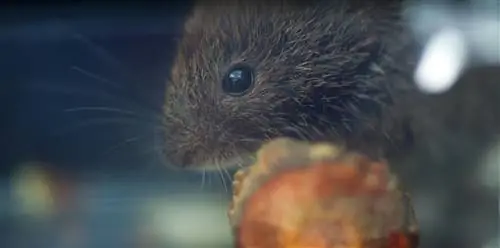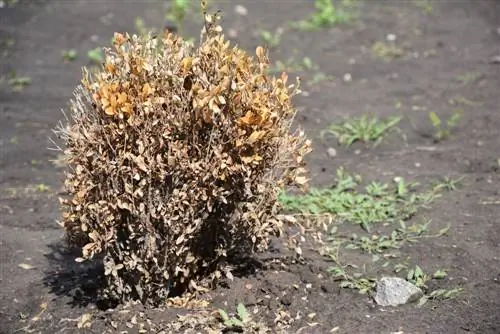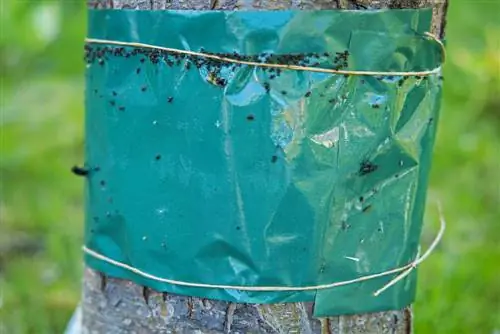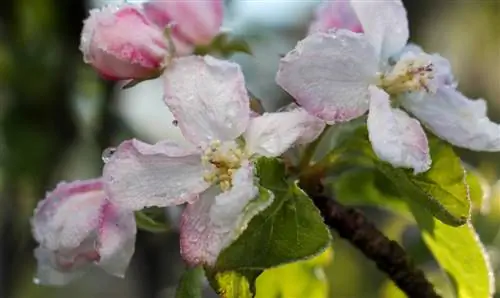- Author admin [email protected].
- Public 2023-12-16 16:46.
- Last modified 2025-01-23 11:22.
Voles have enormous reproductive potential. If the animals settle in your garden, there is almost always massive damage to ornamental and useful plants. We clarify whether the vitality of the apple tree is also affected by the pests and how you can get rid of the uninvited guests in an ecologically friendly way.

Are voles damaging my apple tree?
Through theirfeeding activity, the voles of thehe althof the apple tree are veryclose. Depending on the species, the animals gnaw on the bark or roots of the fruit tree. This weakens the tree and can even die if the roots are eaten away.
How can voles be controlled ecologically?
There arethree reliable methodsto permanently drive away voles:
- Place several live traps (€4.00 on Amazon), equipped with bait made from roots or vegetables, in the aisles and release the rodents elsewhere.
- Introducing calcium carbide into the mouse holes safely drives away the pests.
- Properties on which a robotic lawnmower is used avoid noise-sensitive animals.
It is important that you coordinate all these measures with your neighbors. Unfortunately, small-scale combat operations are usually not crowned with long-term success.
How can I preventively protect the apple tree from voles?
Since the mice seem to prefer young apple trees, it has proven to be effective toprotect the trees with wire meshinplace:
- Wrap the root ball with fine-meshed wire. This should have a mesh size of no more than 20 millimeters.
- Make sure that the battle completely encloses the root area.
- Fix the metal mesh, which is impenetrable to rodents, a few centimeters above the ground, around the trunk.
- Keep the tree cover clear, as thick grass and loose mulch provide ideal shelter.
Tip
Releasing captured voles
The voles caught in the live traps should be transported to the release site in the trap, which you only handle with gloves. To prevent the small rodents from wandering straight back into your garden, release the animals into nature at least one kilometer away.






